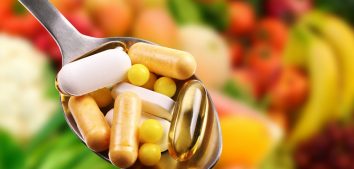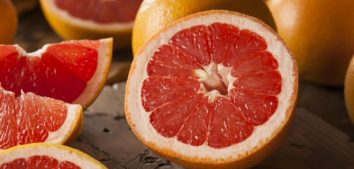
The Effects of Junk Food
One of the main reasons I decided to start this blog was to spread nutritional awareness and motivate you to lead a healthy lifestyle. The challenges that I organize on a regular basis help keep you active even more effectively. Today I wanted to touch upon an important topic, seemingly thoroughly discussed. However, unhealthy, junk food is a common sight on many people’s menu. It seems obvious that a healthy lifestyle won’t protect you against all diseases, but it certainly significantly reduces the risk of their occurrence which has been scientifically proven. Make the most of the upcoming days and try to complete the next step of the #SmallSteps#BigChange challenge in which we reduce (or preferably cut out) highly processed foods from the menu. Below you will find more details why it is worth a try ?
What is “junk food”?
The so-called “junk food” is a group of products characterized by a high content of fat, sugar, salt and various food additives (flavor enhancers, dyes). Of course, thanks to such treatments, the consumer receives a very tasty product, which very often looks appetizing and has a tempting smell. Moreover, these types of products are competitively priced and when compared to classic, healthier, unprocessed food options, they are simply cheaper. The last distinguishing feature is availability, and short or no preparation time.Can you name the products that belong to this group? I don’t think anyone finds this question difficult to answer.
Here are some examples of junk food:
- fast foods, namely chips/fries, hot dogs, hamburgers, pizza, instant products;
- savoury snacks: salty sticks, crisps, popcorn, crackers etc.;
- sweets, confectionery and pastry;
- sweet sauces, icing, marmelade;
- fizzy or still drinks, with extra sugar and artificial coloring as well as sweeteners;
- energy drinks.
Did you know that:
- 100 g of chips equals 560 kcal,
- 3 chocolate chip cookies have about 200 kcal,
- 2 strips of milk chocolate with nuts have about 325 kcal,
- hamburger from a fast food restaurant has at least 250 kcal,
- a glass of soda is 100 kcal and 25 g sugar,
- a big package of crisps amounts to about 760 kcal,
- a sweet bun has about 300 kcal.
These are just a few examples of the most popular foods consumed by both the younger and older generation. A common result of eating such products or replacing regular meals and water with them, results in body weight and body fat increase, and thus leads to the growing likelihood of developing various diseases, especially the so-called lifestyle or affluence ones.
However, it is not the energy value itself that is crucial. You may have heard that junk food is often called “empty calories”. It means that these products have very low nutritional value, are free of vitamins and minerals, or fiber. Reusing the same fat several times for frying is fortunately not so common as it used to be, but still happens. In such cases the process of oxidation takes place, as a result of which products saturated with this fat may have properties that accelerate carcinogenic processes or promote the development of atherosclerosis, due to the formation of the so-called trans fatty acids.
To sum up, junk food is high in calories, with no nutritional value or no fiber. It is easily available and very tasty. Various types of food additives mean that products of this type have a long shelf life, which should already sound like a wake-up call!
Health effects of eating junk food
Finally, the time has come to explain the effects of eating junk food. Long-term exposure to unhealthy and harmful products and a positive energy balance contribute to the health problems described below.

Overweight and obesity
Fast food, sweets, and sweetened colorful drinks are characterized by high energy value, considerable taste, and it is easy to eat much more than you actually need. Therefore, regular consumption of such products leads to excessive growth of adipose tissue in the body.
Fatigue and lethargy
Processed foods, fast food, confectionery products, etc., contain significant amounts of fat. Products of this type stay in the stomach longer and they are digested more slowly, which is why a feeling of tiredness, drowsiness and heaviness after meals consisting of junk food is often observed.
Caries
Caries most often affects small children, but it is not a rule. Large amounts of sweets, colorful carbonated and energy drinks lower the pH in the mouth, and thus lead to the decalcification of the enamel. A few years ago, the problem of tooth decay affected as many as 50% of school children.
Osteopenia and osteoporosis
Vitamin D and calcium deficiencies promote the occurrence of osteopenia, which later turns into osteoporosis. They are one of the most frequently diagnosed nutrient deficiencies in the Polish society. Vitamin D is mainly derived from marine fish, eggs, dairy products, and is also synthesized subcutaneously in response to solar radiation. Calcium can also be found in dairy products, it can be found in rennet cheeses, broccoli, kale or almonds. Unfortunately, the consumption of these products is sometimes insufficient. Why is this happening? The problem is that processed products devoid of beneficial nutrients are often chosen instead of the raw options. People often have no time to prepare lunch for work, leading to, for example, eating fast food or snack bars to satisfy your hunger until you return home
Tumors
Neoplasms are a group of diseases with a multifactorial etiology, however, the significant influence of diet on the risk of developing such diseases is undeniable. Research says that a healthy diet, rich in vegetables and fruits, significantly reduces the risk by up to 18 to 40%. A pro-inflammatory diet plays a key role in the development of some types of cancer, such as breast cancer.
What does a pro-inflammatory diet have to do with junk food? As it turns out, a lot. This is mainly due to saturated fats, trans fats, high salt and sugar levels in these foods. In the body, free radical reactions are triggered, which are responsible for the occurrence of inflammation in the body.
Obesity is also a major risk factor for cancer. Unfortunately, by basing your diet on processed products, snacking between meals or not having enough physical activity, you are on the way to excess weight , and then to obesity. Obesity in some cases increases the chance of getting sick by up to 50% compared to people of normal body weight.
Civilization diseases:
Hypertension
Arterial hypertension is defined as the condition of chronically high blood pressure (in an outpatient examination it is above 140/90 mmHg). It is often accompanied by ailments such as: pain and dizziness, fatigue, sleep disturbances, nervousness, palpitations or shortness of breath, which make it easier to diagnose the disease. The disease can also be asymptomatic. Hypertension alone increases the risk of coronary heart disease by 100%, which unfortunately is one of the most common causes of death.
Is this convincing enough for you to make sure that your pressure values are correct? The main principle that guides the treatment of people with hypertension is limiting sodium, increasing the amount of fruit, vegetables and whole grains which are rich in fiber. Diet based on products commonly referred to as “junk food” is the complete opposite of that.
Fast food contains significant amounts of salt, which retains water in the body, which in turn raises blood pressure, and when consumed in large amounts for a long time, it can contribute to the development of hypertension, which adversely affects both the circulatory system and the urinary system. The World Health Organization recommends that adults limit salt consumption to less than 5 g (1 teaspoon) per day.
Cardiovascular disease
Cardiovascular diseases are unfortunately the most common cause of death in the world. In Poland, the percentage of deaths caused by this type of disease is almost 50%. Caloric surplus, high supply of salt, sugar, and a small amount of fiber are the causes responsible for the possibility of problems with the circulatory system.
Diabetes and insulin resistance
Type 2 diabetes and insulin resistance are undeniably linked to diet. Unfortunately, the high proportion of carbohydrates, mainly simple ones, means that the products have a high glycemic index and a low fiber content. Fast foods contain significant amounts of pro-inflammatory trans fats, which contribute to the chronic inflammation in the body. High calorific value causes easy weight gain. All these factors are known in the etiopathogenesis of carbohydrate metabolism disorders, starting with the occurrence of insulin resistance, which, if left untreated, may turn into diabetes. Then, drug treatment is inevitable. Changing the diet and introducing physical activity can reverse the diagnosis of insulin resistance and allow you to enjoy health for many years to come.
Hypercholesterolaemia
Hypercholesterolaemia is one of the diseases of civilization, the percentage of Poles affected by the problem exceeds 50% for people aged 18-79.
High cholesterol does not cause any unwanted symptoms at first. They are felt only when the excess cholesterol causes complications, which may be: coronary artery disease, heart attack, ischemic stroke or lower limb ischemia, which are a direct threat to life. Problems with atherosclerotic plaque are not only due to a high supply of dietary fat. We know that the above-mentioned inflammation plays a significant role, resulting both from the supply of trans fats, pro-inflammatory ingredients and a significant amount of simple sugars. Too little supply of nutrients and fiber prevents the body’s detoxification processes, blocks the unnecessary, harmful metabolic products from being efficiently removed.
As you can see, there are many reasons to give up, and certainly significantly cut down on junk food. There is always a good time to take care of yourself, and this time will not be wasted 🙂 Start with small changes that will bring you health in the long run! 🙂
Bibliography:
- Bandosz P., i wsp., Niedostateczna wiedza Polaków na temat kryteriów nadciśnienia tętniczego i jego powikłań – wyniki badania NATPOL 2011 [w:] Nadciśnienie Tętnicze, tom 18, nr 1, Via Medica 2014, 9-18.
- Gorczyca-Michta I., Wożakowska-Kapłon B., Pacjent z nadciśnieniem tętniczym i hipercholesterolemią – czy możemy być skuteczniejsi w leczeniu? [w:] Folia Cardiologica, tom 12, nr 3, Via Medica 2017, 262-270.
- Kośmider, A. Gronowska-Senger, Postawa wobec żywności typu “Fast Food” i jej popularność wśród młodzieży szkolnej z rejonu Mazowsza, Roczn. PZH 2005, 56 (2), 138-148.
- Sikorska-Wiśniewska G., Nadwaga i otyłość u dzieci i młodzieży. Żywność Nauka. Technologia. Jakość, 2007, 6 (55), 71 – 80.









Comments No Comments
Join the discussion…